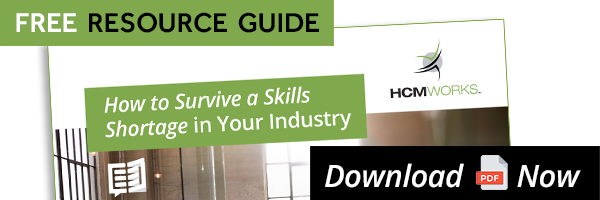An article from Forbes last year predicted that the workforce of the future will no longer be made up of full-time employees, but rather an increasing number of companies would look to build a “blended workforce”.
With recent statistics showing that around 30 per cent of the US workforce currently works on a contingent basis, a number that could reach as much as 40 per cent by 2020, it’s easy to see why building a blended workforce is becoming increasingly popular for many businesses.
While the term is a fairly new one, HR and procurement departments are already working with managed service providers (MSPs) and recruitment process outsourcing (RPO) firms to implement a blended workforce into their staffing strategies.
What is a blended workforce?
A blended workforce is a staffing strategy that combines the planned use of both direct-hire personnel and workers within the gig economy to meet the strategic and tactical workforce needs of your specific corporation.
Through this approach a company’s workforce would be composed, or blended, of full-time employees, as well as freelancers, contractors, temporary workers, consultants, part-time employees and other contingent workers which all collectively make up what is known as the gig economy.
This approach to staffing has been driven by technology and the digital era. HR and procurement teams can now use staffing firms to quickly locate workers with the skill sets that they need for upcoming projects, and non-permanent employees can easily work for a company even when they’re not located in the office.
Advantages of a blended workforce
A blended workforce has numerous benefits for large companies, HCMWorks has listed just a few of those here:
1 - Specialized skill sets: One of the biggest drivers of a blended workforce is to address short-term needs for specialized skill sets. This could include hiring a temporary worker when a specific project requires a skill outside of your company’s full-time knowledge base. This allows your company to adapt to its specific needs and hire workers as and when they are needed, rather than employing someone full-time that is perhaps only needed six months of the year.
2 - Scalable operations: The blended workforce allows companies to scale their operations up or down as needed, reduce costs of physical office space and hire workers for the time period they are needed rather offering long-term contracts. This means your organization has the ability to hire exactly what it needs for the exact time it is needed.
3 - A flexible and agile workforce: By making the most of an agile workforce which takes advantage of employees who can be engaged in an on-demand manner, your organization will have increased flexibility when it comes to staffing. You will be able to bring in temporary workers during times of increased demand such as holiday seasons, and you will always have access to the top talent within your industry.
4 - Addressing skill gaps: The implementation of a blended workforce will mean your company no longer relies on one talent acquisition process. There’s no better way to address a skills gap than having a flexible approach to hiring workers. By adapting the way your organization searches for skilled workers you’ll soon find that the workers that meet your needs are out there.
Managing a blended workforce
Managing a blended workforce, just like any other contingent workforce strategy, is a difficult process and is almost impossible for any company to do alone unless they have hired the specific knowledge required for its implementation.
Thankfully, organizations are able to outsource this expertise. HCMWorks offers an extensive portfolio of advisory services that helps large organizations to hire top talent within their industry and create a management plan that will streamline your current contingent program, from onboarding to payment.
Ready to learn more information about how HCMWorks can successfully transition your organization towards a blended workforce? Contact us today.



